As digital marketers prepare for the upcoming holiday season, it is important for them to take a look back at what happened in the 2016 season and understand the top performing campaigns, highest spending days and results by channel.
As digital marketers prepare for the upcoming holiday season, it is important for them to take a look back at what happened in the 2016 season and understand the top performing campaigns, highest spending days and results by channel.
It is also important to understand new shopping trends led by technical enhancements, acquisition strategies and engagement tactics that will impact the coming season.
This guide serves to help digital marketers implement proven strategies that will greatly impact Q4 and help them reach their goals.
The 2016 holiday season was a record-breaker. The NRF reported that retail sales in November and December 2016 came in at $658.3 billion, up 4% over 2015.
comScore reported that online holiday sales increased 17% last year, bringing in $80.2 billion, boosted by strong mobile growth. Mobile accounted for a 21.4% share of the season’s total digital sales, up from 17.4% in 20152. Cyber Monday (Nov. 28) once again ranked as the heaviest spending day of the year with more than $2 billion in desktop buying for the third year in a row; also becoming the first day ever to eclipse $1 billion in mobile commerce.

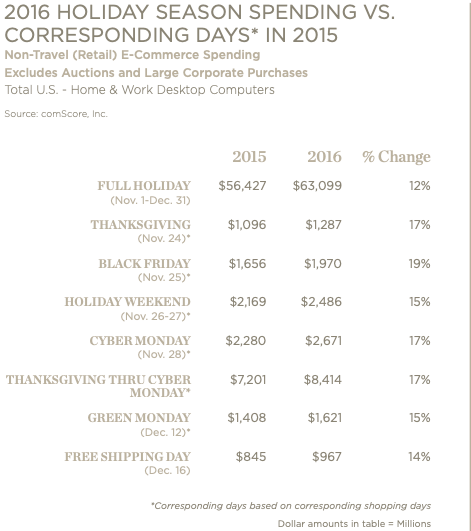
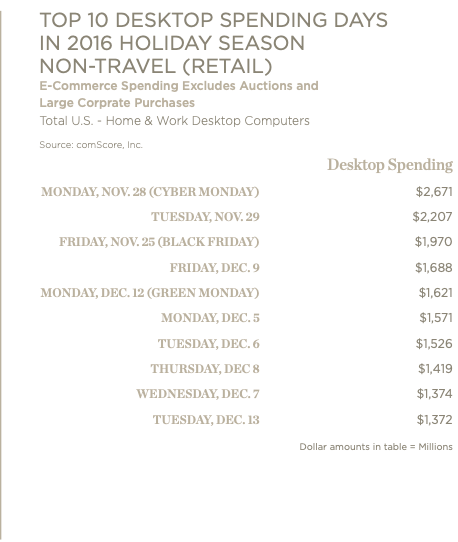
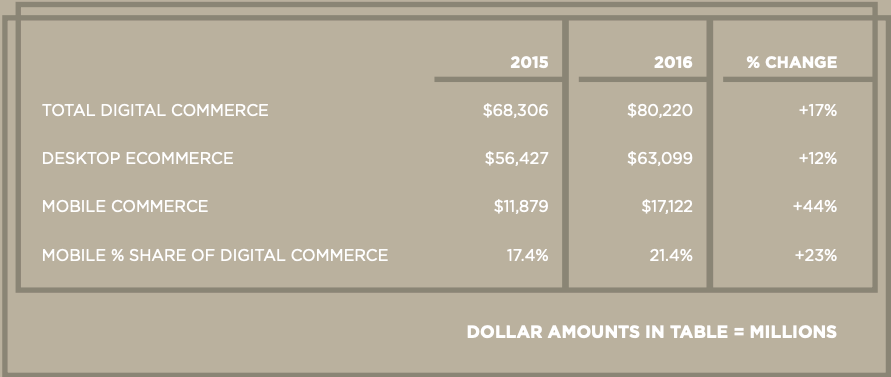
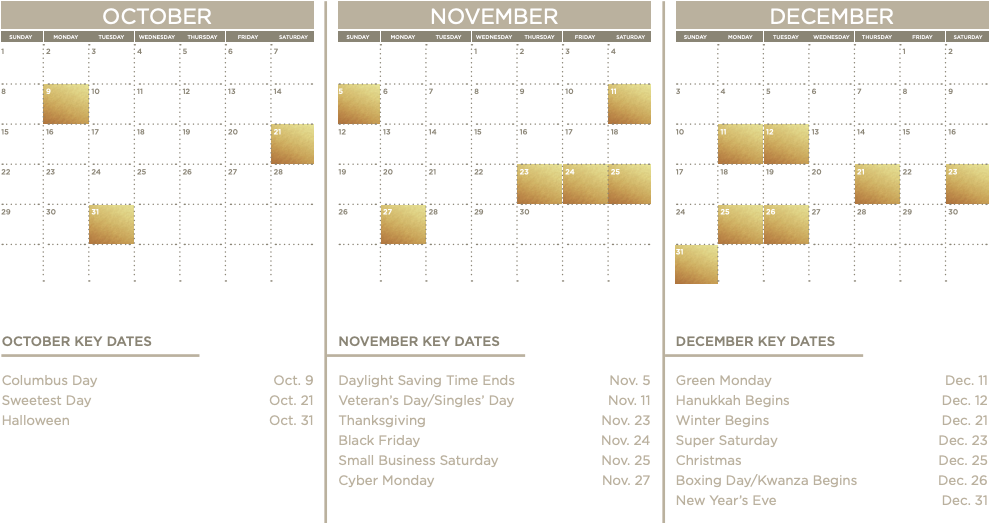
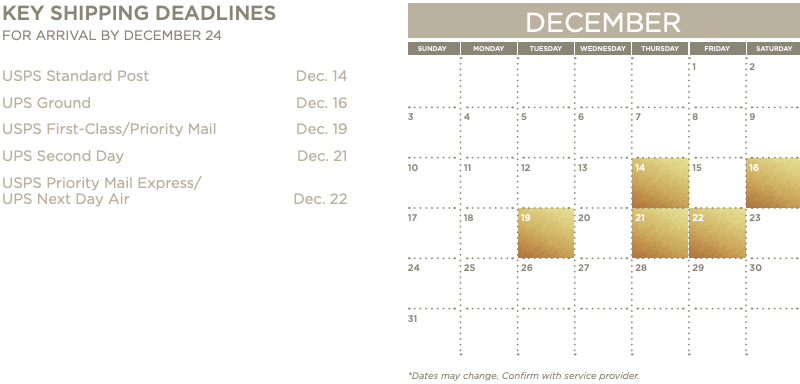


"Listrak’s digital marketing solutions help you create personalized, seamless experiences across all customer touch points and channels."

2017 has been the year that marketers have finally started breaking through the consumer data silos. For years, marketers have collected data across every touchpoint– site, email, physical locations, social networks – but it has been difficult to mine the data in a meaningful way. Customer insights were based on data from a single channel or on the last transaction, which got us closer to 1:1 personalization. But this year, the silos came down.
Predictive content, artificial intelligence, machine learning, predictive analytics – this technology takes personalization to an entirely new level, allowing you to individualize every interaction at every touchpoint.
In this section of the guide, we’ll share cross-channel strategies that will help drive holiday acquisition, conversions and engagement.
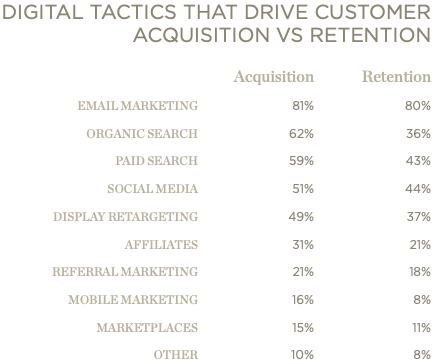
When considering new acquisition tactics, it’s important to understand performance across touch points. Some tactics, like organic and paid search, result in high customer acquisition rates but low retention rates. Customer loyalty isn’t a priority or focus of that channel. On the other hand, email has high acquisition and retention.
While acquisition should be available at every interaction point, you must start to think about it as customer acquisition, not just email acquisition.
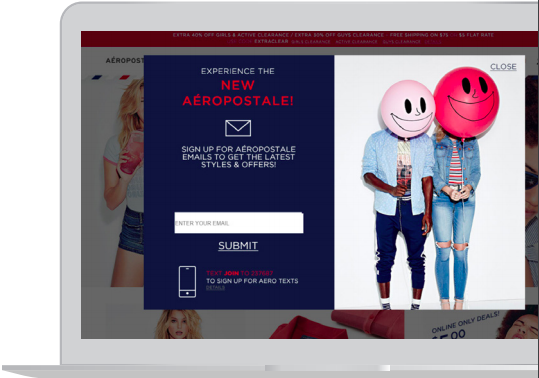
On-site popups are one of the greatest acquisition points as they will grow your list 20%, on average. Not only that, but welcome series revenue is 23% higher for subscribers that enter the conversation through the popup. If you haven’t implemented a popup yet, you should test it as part of your holiday preparation. Doing so will build your list quickly while allowing you to re-market to site browsers and abandoners during the holidays.
But even if you do already have a popup in place, take the time to re-evaluate the performance. And if you are currently only asking for email addresses, update the popup to promote your SMS campaigns.
Best practice dictates that you should share your keyword and short code to allow your audience to begin the conversation on their own instead of including a field for them to enter their mobile numbers.
For more information on SMS campaigns, download our Mobile Marketing Guide “Effective SMS Campaigns that Engage and Convert”.
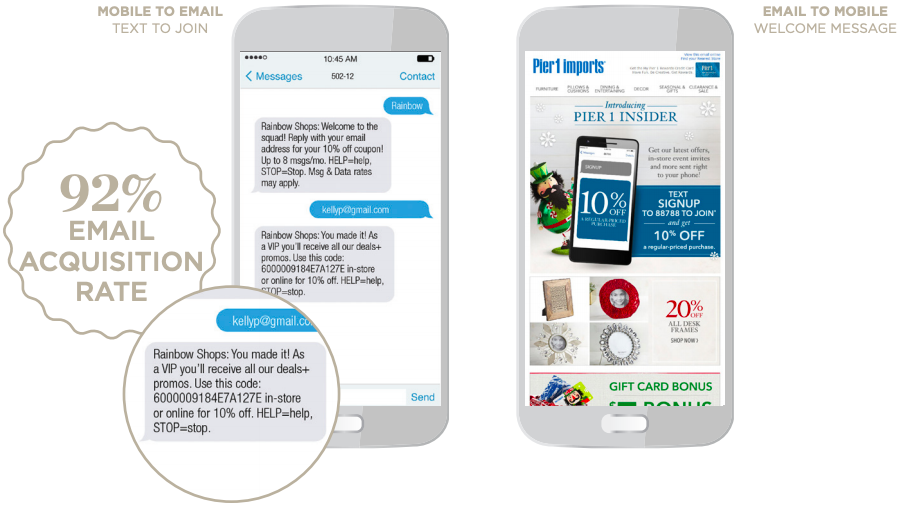
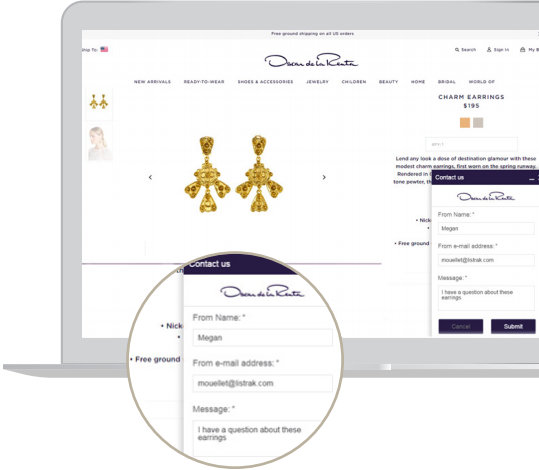
An on-site popup is the equivalent to having a sales associate greet customers when they enter a store. Similarly, Live Chat functionality is the equivalent of the individualized conversations customers have with associates in person.
According to Forrester, 44% of online consumers say that having questions answered by a live person in the middle of an online purchase is one of the most important features a site can offer. And an ATG Global Consumer Trend study found that 90% of customers consider live chat helpful while eMarketer reported that 38% said they made their purchase due to the chat session and 62% said that they are more likely to return to the site to purchase again due to the live chat session.
Live Chat clearly drives sales. But you can also use it to acquire email addresses. After the chat session, send an email follow up asking about the satisfaction of the service to customers that didn’t complete the purchase or ones that did purchase but didn’t subscribe during checkout and give them the chance to subscribe to both your email and SMS campaigns.
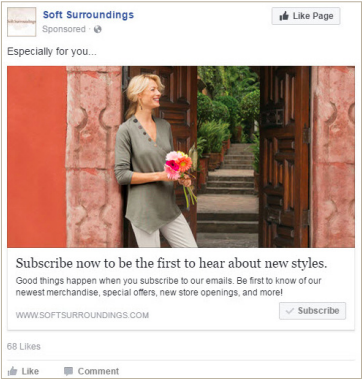
Another acquisition tactic you must consider for the holidays comes through your social networks. This touchpoint offers many benefits. First, even the best on-site acquisition tactics will convert less than 10% of site visitors. And second, according to MOZ, the average time a customer spends on an eCommerce site is 3 minutes, 49 seconds. Compared to the average time spent on Facebook, which is 50 minutes 7 every day, you have a better chance of customers seeing and responding to acquisition forms on Facebook and Instagram.
Social acquisition strategies can be just as targeted, timely and relevant as other ads. For example, a Facebook or Instagram Lead Ad can be served to site visitors who left your site without subscribing or to your target audience who looks and acts like your best customers even though they haven’t visited your site.You can also build relevant re-targeting campaigns to serve to shoppers who abandoned a product page or cart.
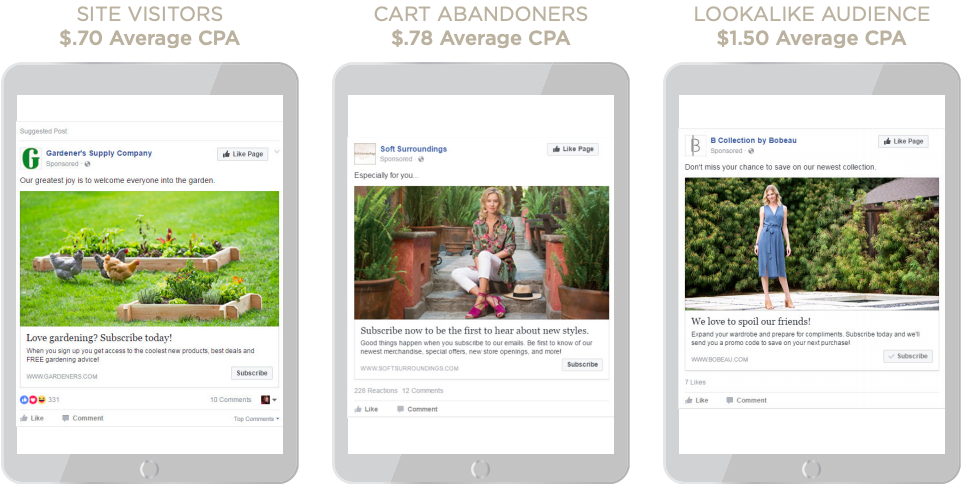

You have to work hard all year to keep your messages timely, relevant and personalized to each consumer in order to keep them engaged.The holidays provide an even greater challenge as there are more distractions in the form of more ads, more emails, more flyers, more catalogs – all competing for your audience’s attention.
But there is good news. In order to achieve this, you don’t have to work harder. Your campaigns do.
Recent developments in artificial intelligence, machine learning and predictive analytics automates the use of your consumer data, ensuring every message you send is personalized, timely and targeted. From emails with predictive content and product recommendations to personalized programmatic display ads, to triggered messages based on changes to your product catalog…your ads can be individualized and tailored to audience segments or specific customers like never before.
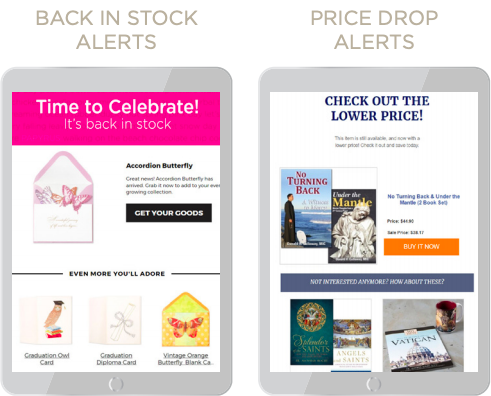
This holiday season, automated Back in Stock and Price Drop Alerts will not only save you time, they’ll drive engagement and sales.
Both campaigns generate five times more revenue per email than broadcast messages, and with average conversion rates of 16% for back in stock and 4% for price drop alerts, these campaigns will drive a lot of revenue for you. Best of all, the campaigns are automated – you set them up once and they are triggered through changes to SKUs regarding price or availability or though the actions of your subscribers on your site.
The inclusion of product recommendations based on SKUs in the same category or subcategory enhances the performance of these campaigns while aiding in product discovery.
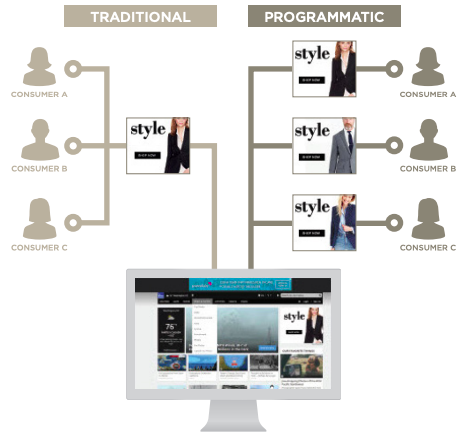
Marketers typically have email addresses for 30% of their site visitors. The rest remain anonymous. Programmatic ads greatly expand your reach, allowing you to be responsive to your site visitors in real time.
Programmatic ads, like Listrak’s solution, allow you to personalize banner ads based on each visitor’s on-site behavior, profile and customer journey stage. More importantly, Listrak’s solution tracks results so you can spend your budget more effectively - on campaigns that provide the highest incremental revenue and ROAS.
This holiday season, a strategic approach to programmatic advertising will recapture the shoppers who visited your site and abandoned a product page or cart but didn’t complete the purchase. And they will help you keep customers engaged after the purchase by keeping related products in front of them.
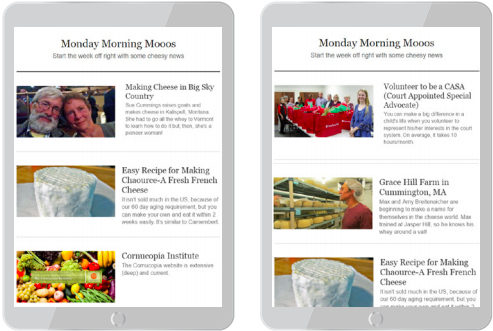
On average, marketers spend 28% of their annual budgets producing content in the forms of articles, blogs, look books, videos and other engaging documentation designed to inform your audience while positioning their brand as the industry thought-leaders and experts.
It’s one of the best ways to compete against Amazon, especially for brands that don’t want to discount or compete on price alone.
Predictive Content solutions like Listrak’s allow you to automatically get the most relevant content in front of the right audience, maximizing your investment while driving engagement and conversions.
The NRF reported that up to 30% of annual online revenue and 22% of in-store revenue comes from holiday sales. With so much at stake, retailers need to do everything they can to prepare for the upcoming holiday season.
The right cross-channel acquisition and engagement strategies will keep your audience shopping with you – and not your competitors – this holiday season.
Remember, relevance drives performance. And with the advancements in artificial intelligence, machine learning and predictive analytics, personalization tactics can be automated
